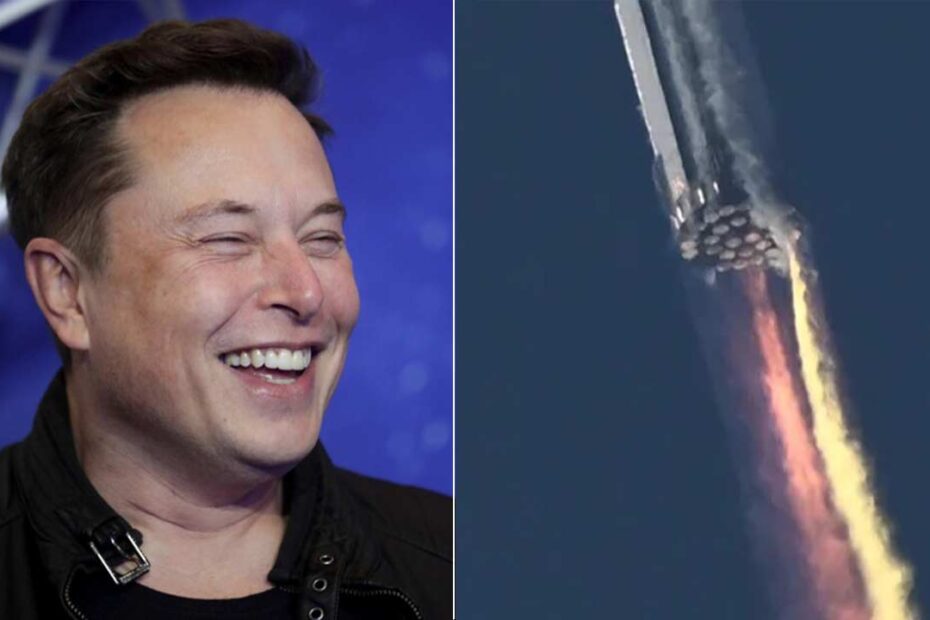Elon Musk expects SpaceX to spend about $2 billion on development of its Starship rocket this year, as the company pushes for its first launch as early as this month.
“My expectation for the next flight would be to reach orbit,” Musk said during a discussion on Twitter Space on Saturday.
While SpaceX holds secondary rounds twice a year to give employees and other company shareholders a chance to sell stock, Musk said the company “does not anticipate needing to raise funds” to advance the Starship program and its other ventures.
“As far as I know, we don’t need to increase funding for SpaceX,” Musk said.
The SpaceX CEO said that in the dramatic April 20 launch for the first fully stacked Starship rocket launch, “the result was about what I expected, and maybe a little more than I expected.”
SpaceX has several more prototypes in various stages of assembly and aims to launch its next attempt to reach space with the giant rocket within a few months.
“The goal of these missions is just information. Like, we don’t have a payload or anything — it’s just to learn as much as possible,” Musk said.
He put the chances of reaching orbit with a Starship flight this year at “probably” 80%, but added that he thinks “there’s a 100% chance of reaching orbit within 12 months.”
Starship’s flight took off from the launchpad and achieved several milestones, but Musk gave more details about the various problems faced by the rocket.
The rocket took off with only 30 of the 33 Raptor engines at the base of the Super Heavy booster ignited. Musk said that SpaceX “chose not to start the three engines” because they “were not healthy enough to give them full thrust.” Starship later slid off the launchpad as it ascended into the sky, which Musk said was “due to engine failures.”
About 27 seconds into flight, SpaceX “lost communication” with the second engine—an event that coincided with “an energetic event of some sort” that removed the heat shields around several of the other engines. “Things really hit the fan” about 85 seconds into launch, when SpaceX lost “thrust vector control” — or the ability to steer the rocket.
Additionally, Musk explained that it took about 40 seconds for the rocket’s AFTS (Autonomous Flight Termination System, which destroys the vehicle in that event) to kick in, which SpaceX needs to fix before the next launch attempt.
The strongest part of the rocket’s performance was how well it held together, with a launch milestone called “Max Q,” or the moment when the atmospheric pressure on the rocket is strongest.
“The vehicle’s structural margin appears to be better than we expected, as we can tell from the vehicle actually doing somersaults toward the end and still being intact,” Musk said.
Looking ahead, Musk said SpaceX “made so many improvements” to future prototypes. With the next launch the company needs to make sure “we don’t lose thrust vector control”.
Back on the ground, Musk said the booster created a “rock tornado” under the rocket as it lifted off. While SpaceX “has not seen evidence that the rock tornado actually physically damaged the engines or the heat shield,” Musk said the company “certainly did not expect” the launch pad’s concrete to be damaged. will be destroyed and a pit will be made in its wake.
“One of the more plausible explanations is that … we may have compressed the sand under the concrete to such an extent that the concrete effectively bent and then cracked,” Musk said.
The priority for the next flight, Musk said, would be to get the 33 Raptor engines “starting to get off the pad faster and faster.” It took about five seconds for SpaceX to start the engines and launch the rocket, which Musk noted is “a really long time to blast off the pad.” The company aims to cut that time in half for the next attempt.
Later photographs have shown the violent consequences of the Super Heavy Booster’s engines. A report by the US Fish and Wildlife Service states that the launch throws concrete and metal “thousands of feet away” and creates a cloud of dust and pulverized concrete that falls up to 6.5 miles from the launch site.
On Saturday, Elon Musk said, “the pad damage is actually quite small” and “should be repaired quickly.” He estimated that the necessary repairs meant SpaceX would be ready to launch in “probably six to eight weeks”. SpaceX will replace some of the propellant tanks near the launchpad. The 500-foot-tall tower is “in good shape,” with “no meaningful damage,” even though it was hit by “some pretty massive chunks of concrete.”
Elon Musk believes the biggest obstacle to re-flying is “probably the need” for AFTS to destroy the rocket, as it “took too long” to explode.
SpaceX is moving forward with plans to install a steel plate under the launch tower of the next Starship rocket that will be cooled by a water system.
